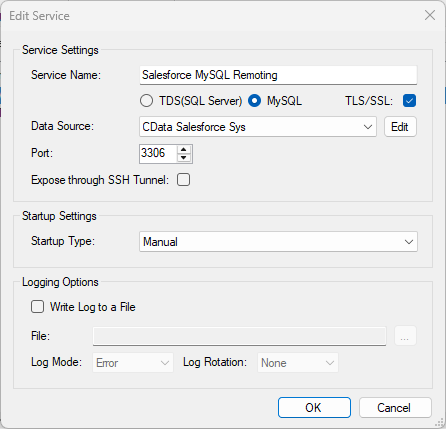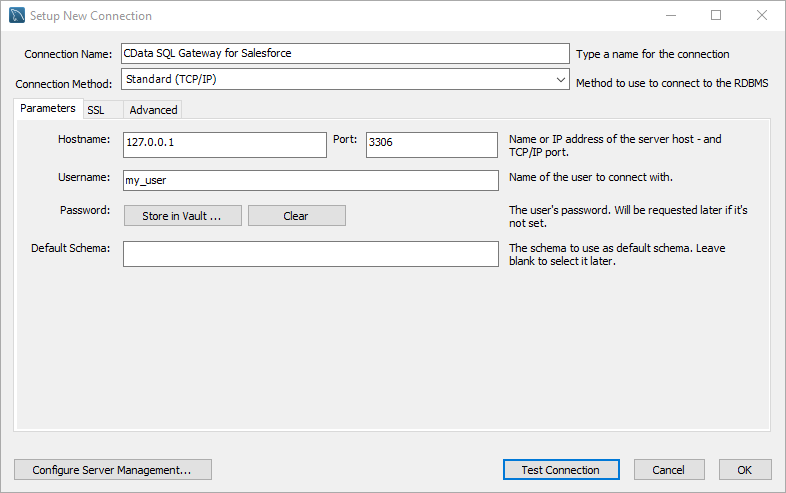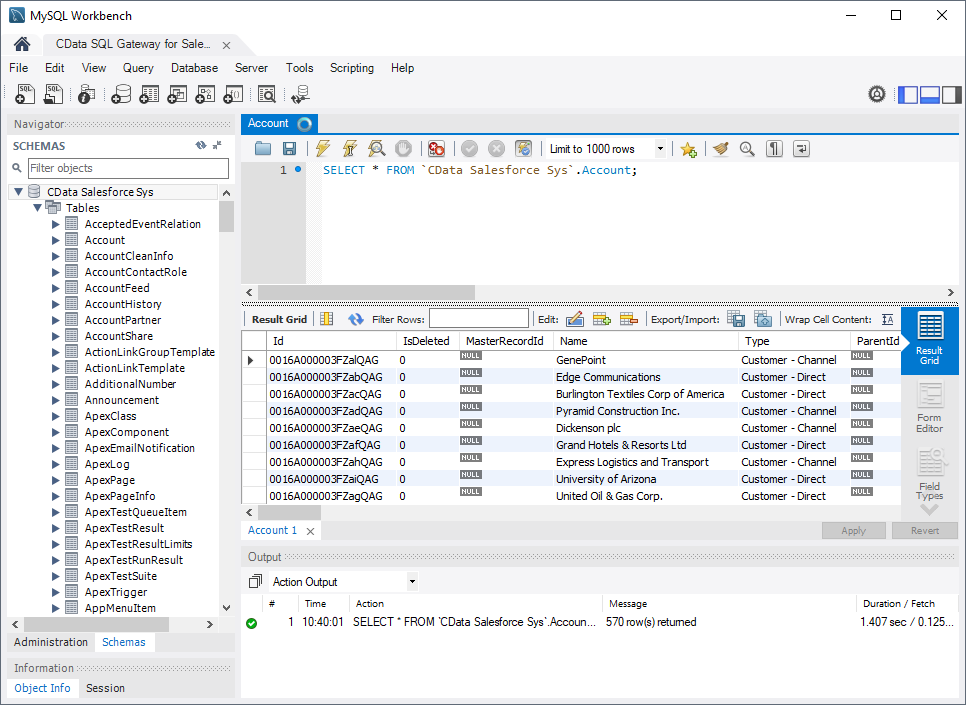Model Context Protocol (MCP) finally gives AI models a way to access the business data needed to make them really useful at work. CData MCP Servers have the depth and performance to make sure AI has access to all of the answers.
Try them now for free →How to Query Sage 200 Data in MySQL Workbench
Execute MySQL queries against live Sage 200 data from MySQL Workbench.
You can use the SQL Gateway from the ODBC Driver for Sage 200 to query Sage 200 data through a MySQL interface. Follow the procedure below to start the MySQL remoting service of the SQL Gateway and work with live Sage 200 data in MySQL Workbench.
Connect to Sage 200 Data
If you have not already done so, provide values for the required connection properties in the data source name (DSN). You can use the built-in Microsoft ODBC Data Source Administrator to configure the DSN. This is also the last step of the driver installation. See the "Getting Started" chapter in the help documentation for a guide to using the Microsoft ODBC Data Source Administrator to create and configure a DSN.
- Schema: Determines which Sage 200 edition you are connecting to. Specify either StandardUK or ProfessionalUK.
- Subscription Key: Provides access to the APIs that are used to establish a connection. You will first need to log into the Sage 200 API website and subscribe to the API edition that matches your account. You can do so here: https://developer.columbus.sage.com/docs/services/api/uk. Afterwards, the subscription key may be found in your profile after logging into Sage 200.
Configure the SQL Gateway
See the SQL Gateway Overview to set up connectivity to Sage 200 data as a virtual MySQL database. You will configure a MySQL remoting service that listens for MySQL requests from clients. The service can be configured in the SQL Gateway UI.

Query Sage 200 from MySQL Workbench
The steps below outline connecting to the virtual Sage 200 database created in the SQL Gateway from MySQL Workbench and issuing basic queries to work with live Sage 200 data.
Connect to Sage 200 through the SQL Gateway
- In MySQL Workbench, click to add a new MySQL connection.
- Name the connection (CData SQL Gateway for Sage 200).
- Set the Hostname, Port, and Username parameters to connect to the SQL Gateway.
- Click Store in Vault to set and store the password.
- Click Test Connection to ensure the connection is configured properly and click OK.
NOTE: When we refer to Username and Password, we mean the credentials for the user(s) created for the SQL Gateway.

Query Sage 200 Data
- Open the connection you just created (CData SQL Gateway for Sage 200).
- Click File -> New Query Tab.
- Write a SQL query to retrieve Sage 200 data, like SELECT * FROM `CData Sage200 Sys`.Banks;

With access to live Sage 200 data from MySQL Workbench, you can easily query and update Sage 200, just like you would a MySQL database. Get started now with a free, 30-day trial of the CData ODBC Driver for Sage 200 and the CData SQL Gateway.

